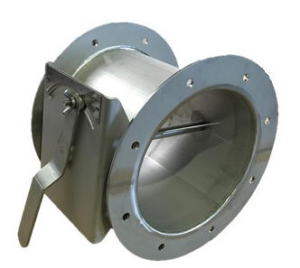Volume control dampers (VCDs), also sometimes called zone dampers, are the workhorses of airflow management in Heating, Ventilation, and Air Conditioning (HVAC) systems. They regulate the amount of air flowing through a specific section of ductwork.
Here’s how they work:
Types of VCDs:
-
Manual VCD: This is the most basic and affordable option. It has a handle or knob that you turn to adjust a metal blade inside the duct. Turning the handle opens or closes the blade, controlling airflow.
-
Motorized VCD: This is a more advanced VCD that integrates with building automation systems. It uses an electric motor and actuator to automatically adjust the blade position based on a signal from a thermostat or other control system.
Operation:
Regardless of the type, the core function remains the same:
- Blade: A metal blade pivots within the duct opening.
- Adjustment: By turning the handle (manual) or through a control signal (motorized), the blade position changes.
- Airflow Control:
- Open Blade: Maximum airflow through the duct.
- Closed Blade: Significantly restricts airflow.
- Partially Open Blade: Offers moderate airflow control.
Benefits of VCDs:
- Balanced Airflow: Ensures each conditioned zone receives the desired amount of air, preventing uneven temperatures.
- Zoning: Allows for independent control of airflow in buildings with multiple zones with varying temperature needs.
- Optimized System Efficiency: Regulating airflow reduces energy consumption by preventing excessive air from being heated or cooled unnecessarily.
Analogy: Imagine a water hose filling a bathtub. The VCD is like a dial on the nozzle. By adjusting the dial (blade position), you control how much water (airflow) fills the tub (conditioned zone).
I hope this explanation clarifies volume control dampers! Let me know if you have any other questions.

VISIT OUR WEBSITE:https://vipulac.in/
CONTACT NO: 8000092000

Pingback: What are control dampers in HVAC? - Vipul AC